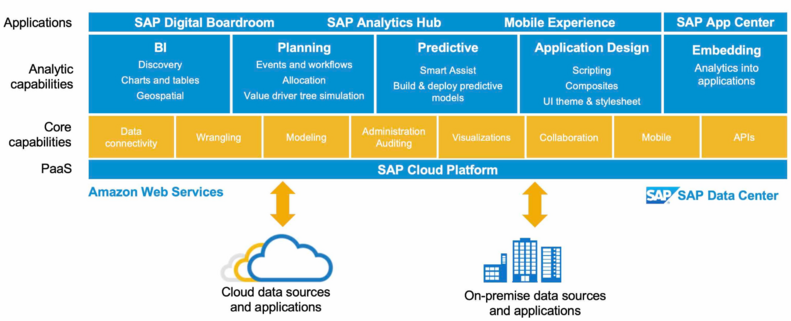SAP Analytics Cloud (SAC) is a sophisticated cloud-based platform that integrates business intelligence (BI), planning, and predictive analytics into a single, comprehensive solution. As a crucial component of the SAP Business Technology Platform, SAC provides organizations with a unified view of their data by seamlessly connecting with a wide variety of data sources, whether they are on-premises or cloud-based. This capability facilitates in-depth analysis and supports informed decision-making across various business functions.
A standout feature of SAC is its versatile data connectivity. The platform supports two primary methods for connecting to data sources: live connections and data acquisition. Live connections enable real-time access to data from key systems such as SAP BW, SAP S/4HANA, and SAP HANA. This ensures that users always have the most current data at their fingertips, eliminating delays typically associated with data updates and enhancing the timeliness of decisions. Real-time data access is crucial for dynamic decision-making environments where up-to-the-minute information is essential.
In addition to live connections, SAC also supports data acquisition. This method allows users to import data from a wide range of sources, including those that do not support live connections. Data acquisition broadens the scope of data sources that SAC can handle, making it a versatile tool for organizations that rely on diverse data environments. By accommodating both real-time and batch data integration, SAC offers a flexible approach to data analysis that caters to various business needs.
The user interface of SAC is designed with ease of use in mind. It features an intuitive drag-and-drop functionality that simplifies the creation of interactive dashboards and visualizations. Users can easily assemble dashboards using a variety of visual elements, such as charts, graphs, maps, and tables. These visualizations can be customized to meet specific analytical requirements, making it straightforward to present data in a clear and impactful manner. The ease of use in building dashboards and visualizations ensures that users can effectively communicate insights and findings.
Beyond its BI capabilities, SAC is equipped with advanced analytics features that enhance its analytical power. Predictive modeling enables users to forecast future outcomes based on historical data, providing valuable insights into potential future scenarios. Machine learning algorithms are employed to identify patterns and trends that may not be immediately apparent through traditional analysis methods. Additionally, natural language processing (NLP) allows users to interact with their data through conversational queries, simplifying the data exploration process and making complex analyses more accessible to non-technical users.
In the realm of financial planning, SAC stands out with its robust tools for collaborative planning, scenario analysis, and variance tracking. Collaborative planning features facilitate team-based budget creation and financial forecasting, ensuring alignment and coordination among all stakeholders. Scenario analysis tools enable users to simulate various financial scenarios, assess potential outcomes, and make well-informed decisions based on different assumptions. Variance tracking capabilities help organizations analyze discrepancies between planned and actual performance, providing insights that can drive necessary adjustments and improvements.
Recent updates to SAC have introduced several new features and enhancements. The integration of stories and analytic applications into a single artifact has streamlined the creation and management of complex reports and analyses. New functionalities such as running total calculations in tables and charts are particularly useful for tracking cumulative key performance indicators (KPIs) over time. Enhanced data point commenting capabilities allow users to annotate specific data points within visualizations, which improves collaboration and communication among team members.
Looking forward, SAC is set to benefit from a range of planned enhancements. Future updates will include better integration with SAP Data Sphere (formerly SAP Data Warehouse Cloud), which will streamline data access and analysis across various sources. New data connectors will support custom data sources, enabling connections to any source that provides an API or JDBC driver. Additional improvements will introduce more interactive custom widgets and advanced story design features, such as vertical filter panels and dynamic text for live data models, further enhancing the platform’s flexibility and usability.
The cloud-based architecture of SAC offers significant advantages in scalability and accessibility. By operating in the cloud, SAC eliminates the need for on-premises infrastructure maintenance and provides organizations with the flexibility to scale their resources as needed. This cloud setup supports remote work and global collaboration, ensuring that users can access data and analytics from anywhere, at any time.
In summary, SAP Analytics Cloud is a comprehensive and advanced platform that merges BI, planning, and predictive analytics into a single, powerful solution. Its ability to connect with diverse data sources, combined with an intuitive interface and advanced analytical features, makes it an invaluable tool for organizations aiming to leverage data for strategic decision-making. With ongoing updates and future enhancements, SAC is well-positioned to meet the evolving needs of businesses, supporting effective financial planning, sales analysis, supply chain optimization, and more in today’s fast-paced and dynamic environment.






Comments